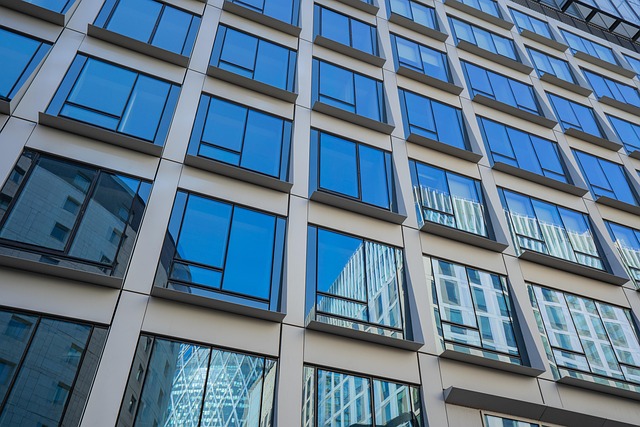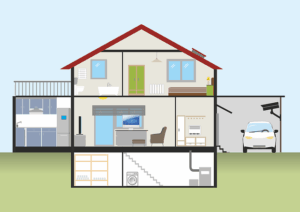Destratification fans are vital for combating thermal stratification in tight attics and lofts, enhancing comfort and energy efficiency. With advanced air mixing technology, these fans redirect warm air back towards the floor, promoting uniform temperature distribution. Ceiling-mounted units discreetly integrate into existing spaces, while low-profile models clear ceiling joists for optimal air circulation. Strategic planning is key for installation, including space assessment, fan placement, and regular maintenance for peak performance in both residential and commercial settings.
In tight attic and loft spaces, effective air circulation can be a challenge. Low-profile destratification fans offer a discreet yet powerful solution. This article delves into the world of destratification fans, exploring their role in improving indoor air quality and energy efficiency. We navigate the challenges of installation in constrained areas, highlighting key features that make these fans ideal for such spaces. Additionally, we provide a step-by-step guide and best practices to ensure optimal performance.
- Understanding Destratification Fans: Their Role and Benefits
- Challenges of Installing Fans in Tight Spaces
- Key Features of Low-Profile Destratification Fans
- Step-by-Step Guide: Fitting Them in Attics and Lofts
- Best Practices and Tips for Optimal Performance
Understanding Destratification Fans: Their Role and Benefits

Destratification fans play a crucial role in addressing the issue of thermal stratification, especially in tight attic and loft spaces. This phenomenon occurs when warm air rises to the top of enclosed areas, creating a layer of hot air that can significantly impact comfort levels and energy efficiency. By strategically placing these fans, you can disrupt this stratified air flow, ensuring uniform temperature distribution throughout the space.
These fans are designed with specific air mixing technology, enabling them to redirect warm air back down towards the floor, effectively combating the natural tendency of hot air to rise. This process not only enhances thermal comfort but also offers substantial energy savings and improves HVAC efficiency. In commercial applications and industrial cooling scenarios, destratification fans can be a game-changer, providing precise temperature control while reducing operational costs. Ceiling-mounted units are particularly well-suited for such spaces due to their discreet nature and ability to blend seamlessly into the existing environment, ensuring both optimal performance and aesthetic appeal.
Challenges of Installing Fans in Tight Spaces

Installing destratification fans in tight attic or loft spaces presents unique challenges due to limited access and restricted clearance. These compact areas often require specialized equipment and precise planning to accommodate the fan’s size and functionality while ensuring proper air circulation. Traditional ceiling-mounted fans might not fit, making custom solutions or low-profile models essential.
The goal is to achieve efficient thermal stratification, warm air redistribution, and enhanced HVAC efficiency without causing disruption or damaging existing structures. Ceiling-mounted destratification fans are designed for these exacting conditions, offering advanced air mixing technology tailored for tight spaces. This ensures optimal energy savings and temperature control in both residential and commercial applications, proving that even confined areas can benefit from effective cooling solutions.
Key Features of Low-Profile Destratification Fans

Low-profile destratification fans are designed to efficiently combat thermal stratification in tight attic and loft spaces. Key features include slim profiles that clear ceiling joists, ensuring optimal air circulation without obstructing insulation or other fixtures. These fans often incorporate advanced air mixing technology to promote warm air redistribution, enhancing HVAC efficiency and temperature control throughout the space.
Unlike traditional ceiling mounted fans, low-profile destratification models are tailored for commercial applications where energy savings and discreet operation are paramount. Their innovative design enables them to operate effectively while minimizing noise levels, making them suitable not just for residential attics and lofts but also for industrial cooling needs.
Step-by-Step Guide: Fitting Them in Attics and Lofts

Fitting low-profile destratification fans in attics and lofts requires careful planning and a step-by-step approach to ensure optimal air circulation and energy savings. Start by assessing the space: measure the dimensions, check for any obstructions like beams or joists, and identify the best locations for fan installation. Next, select the appropriate ceiling-mounted fans designed for these tight spaces, focusing on models with advanced air mixing technology for maximum HVAC efficiency.
When ready to install, begin by securing the fans firmly in place using suitable brackets and fasteners. Ensure proper alignment to prevent air leaks. Then, connect the fans to the required power source, taking care to follow electrical safety guidelines. Once installed, test the fans to verify their functionality and check for any thermal stratification issues. Regular maintenance and cleaning will further ensure optimal performance and temperature control in these challenging environments, contributing to overall energy savings in both residential and commercial applications.
Best Practices and Tips for Optimal Performance

For optimal performance of low-profile destratification fans in tight attic and loft spaces, several best practices should be followed. First, ensure proper sizing of the fan to match the space’s unique dimensions and thermal characteristics. Inadequate sizing can lead to inefficient warm air redistribution and poor HVAC efficiency. Next, strategic placement is key; ceiling mounted fans should be installed to maximize air circulation while minimizing noise levels. This often involves careful consideration of the building’s architectural layout and existing ventilation systems.
Additionally, regular cleaning and maintenance are crucial for maintaining optimal performance and energy savings. Dust and debris buildup on fan blades can significantly impair air mixing technology, impacting both thermal stratification and overall comfort. Consider using ceiling-mounted fans designed for commercial applications or industrial cooling to enhance durability and efficiency, ensuring long-lasting functionality in challenging environments.
Low-profile destratification fans offer a practical solution for improving attic and loft ventilation, addressing temperature stratification, and enhancing overall energy efficiency. By seamlessly fitting into tight spaces, these fans provide an effective way to maintain optimal environmental conditions without sacrificing design aesthetics. With the right installation and best practices, homeowners can enjoy improved air quality, reduced energy bills, and a more comfortable living space, making low-profile destratification fans a valuable addition to any property.














